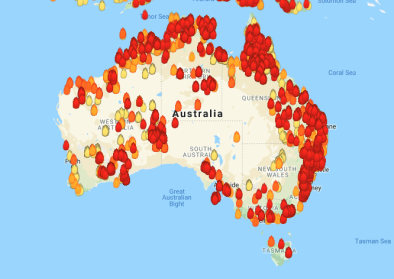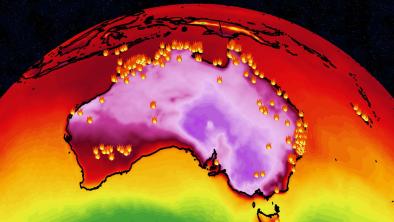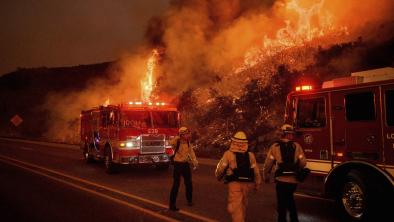Australia Bushfire Season 2019-2020
The catastrophic and unprecedented 2019–20 Australian bushfire season burned an estimated 48 million acres, destroyed more than 5,900 homes and other structures, and killed at least 34 people and an estimated 1 billion animals.[1]
Australia has seen a long-term increase in the risk of fires and a lengthening bushfire season due to climate change, particularly in the southeast, according to the Australian Bureau of Meteorology. Winter rainfall has been decreasing in the southeast, while the country has been becoming hotter with more extreme heatwaves — ideal conditions for bushfires.
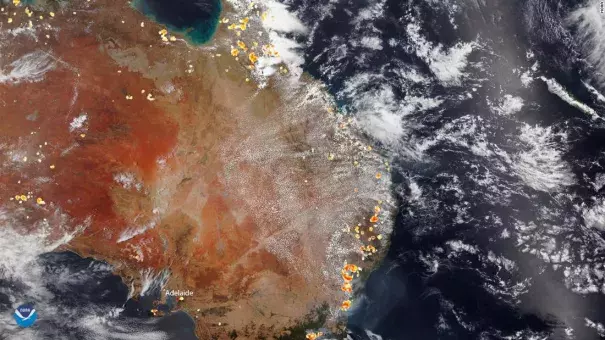
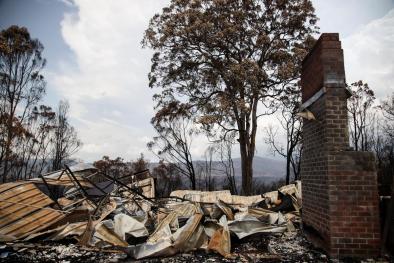
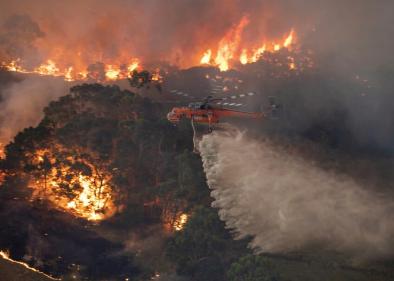
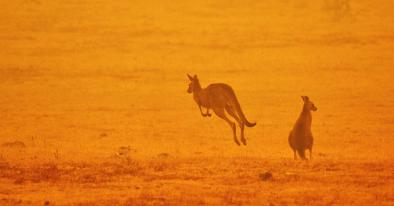

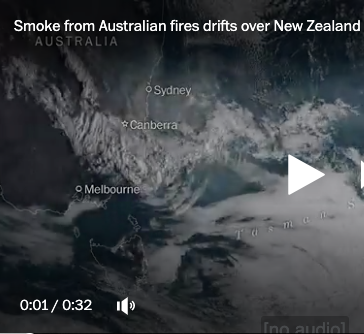

Climate science at a glance
-
An attribution analysis by the World Weather Attribution group found that global warming boosted the risk of the hot, dry weather driving the bushfires by at least 30 percent.
-
A study looking at Australia's 2015/16 bushfire season found that climate change doubled the risk of extreme surface dryness.[1]
-
Climate change is increasing bushfire risk in Australia by lengthening fire season, decreasing precipitation and increasing temperature, according to the Australian Bureau of Meteorology.[2]
-
There has been a long-term increase in extreme fire weather and in the length of the fire season across large parts of Australia since the 1950s.[2]
-
April to October rainfall across southeastern and southwestern Australia has declined.[2]
Background
Compound events and increased fire risk
Historically significant weather and climate events are often the result of the combined influence of extremes in multiple variables occurring simultaneously such as a drought period intersecting with a prolonged heatwave, or record high daily temperatures— an occurrence which typically results in large impacts on agriculture, human health, fire weather and infrastructure.
Climate change can have a significant influence on the frequency, magnitude and impact of some types of compound events. For example, the confluence of background warming trends, background drying trends and natural variability saw extreme heat and low rainfall across Tasmania during the spring, summer and autumn of 2015–2016 when there were significant bushfires.
If anyone tells you, 'This is part of a normal cycle' or 'We’ve had fires like this before', smile politely and walk away, because they don’t know what they’re talking about.
Greg Mullins, Former Fire and Rescue NSW commissioner
Climate signals breakdown
Climate signal #1: Wildfire risk increase
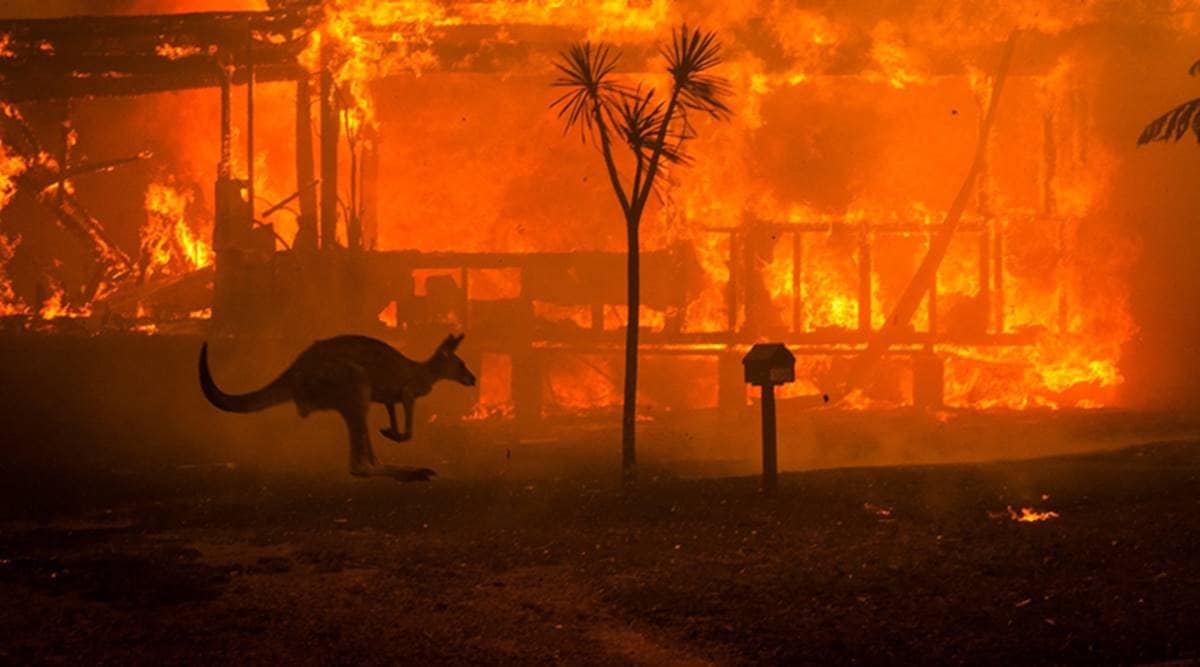 All fire needs to burn is an ignition source and plenty of fuel. While climate change might not ignite the fire, it is giving fires the chance to turn into catastrophic blazes by creating warmer temperatures, increasing the amount of fuel (dried vegetation) available, and reducing water availability due to higher evaporation. These infernos have dire consequences – from respiratory illness to loss of life and property, many communities are not equipped to deal with this new era of mega fires.
All fire needs to burn is an ignition source and plenty of fuel. While climate change might not ignite the fire, it is giving fires the chance to turn into catastrophic blazes by creating warmer temperatures, increasing the amount of fuel (dried vegetation) available, and reducing water availability due to higher evaporation. These infernos have dire consequences – from respiratory illness to loss of life and property, many communities are not equipped to deal with this new era of mega fires.
Observations consistent with climate signal #1
- In November 2019, a ‘catastrophic’ fire warning was issued for Sydney, the country’s largest city, for the first time. Conditions were so bad, the week was described as possibly “the most dangerous bushfire week” in the country’s history.
-
In total, bushfires burned around 48 million acres (19.4 million hectares), resulting in 34 direct deaths and the destruction of 5,900 residential and public structures.
Climate signal #2: Extreme heat increase
Extreme heat and dry spells have become more common and severe over the past few decades. Australia has warmed by just over 1°C since 1910, with most warming since 1950.[2] Since 1950 the annual number of record hot days across Australia has more than doubled.[3]
The number, duration and intensity of heat waves (although highly variable over a small number of years) should not change over decades in a stable climate. The increasing severity of Australian heat waves are part of a long-term global trend towards more heat waves and hot weather in many regions driven by human-caused climate change.[4][5]
Observations consistent with climate signal #2
- The year 2019 was the hottest on record for Australia with the temperature reaching 1.52°C above the long-term average.[6]
- On Wednesday 18 December, Australia experienced its hottest day on record with an average maximum temperature of 41.9°C (107.4°F), beating the previous record by 1°C that had been set only 24 hours earlier.
- Temperatures have been record-breaking over the last year, with January 2019 the country’s hottest month on record.
Climate signal #3: Drought risk increase
Climate change is making droughts more likely to occur - and more severe when they do - in Australia. While Australia is no stranger to drought, climate change has exacerbated drought conditions so that when droughts occur, it is in a much hotter climate and, in some cases, with lower precipitation.
Warming has already increased the severity of drought conditions and Australia is projected to experience decreases in rainfall across southern Australia with more time in drought, but an increase in intense heavy rainfall throughout Australia.[2]
Observations consistent with climate signal #3
- Some parts of the country, including areas that are now burning, have had their driest 34-month period since records began.
- Rainfall during the winter has been below half the typical level in some areas over the last three years.
- October 2019 was the driest October on record in southern Australia.
Related Content

